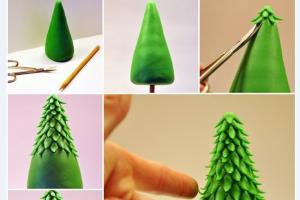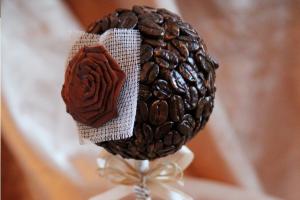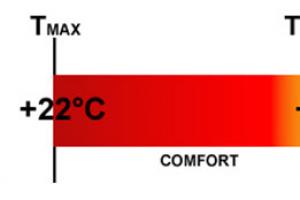If the trees in your country house bend during the season under the weight of fruits that require urgent processing, you should take care of having a juicer. This problem also arises among winemakers, among whom there are no people willing to process the berries manually. It is quite possible to make a juice press yourself, eliminating additional expenses for purchasing equipment, which is quite expensive today.
Operating principle
Screw type can be made according to different technologies, in this process, parts are used such as old containers, tanks from washing machines, as well as pots and boards. In some cases, structures are made using a jack. If we are talking about a traditional device for obtaining juice, then the device includes the following components: a thrust mechanism, a basket, a pressing element, and a base. The basket should be placed on the base, with a tray underneath for receiving juice. The last of these elements provides a gutter, under which a sap receiver is installed.
Making a press yourself

Initially, you will need to prepare the base and frame, which are made from metal profile. To make a juice press, you will need to form the upper part of the frame, which should be positioned horizontally. For this element, the most durable and rigid profile with thick walls is selected. This will prevent the components from bending under load. A sheet of plywood is laid on the base, on which the tank and tray are installed. In order to prevent frame corrosion, it is necessary to cover the surface with a layer of paint. As for plywood, it is treated with varnish.
Pallet preparation

If you decide to make a juice press yourself, then you will need to prepare a tray; the element of the same name from the pot can serve as it large diameter. All you need to do is cut a hole in the side and glue a plastic tube into it, with the help of which the juice will flow into the receiver. When working with a pallet, you need to act very carefully, since the product can easily break if it is accidentally caught or something is dropped on its surface. This also applies to operation, since the tube can be torn out due to negligence. In order not to worry about this, it is best to use a pallet made of of stainless steel.
Making a tank

A juice press must have a tank, which can be made by a craftsman from galvanized steel. When choosing a material, you should stock up on planed pine beams, it should not be glued, you can easily find such lumber in any hardware store. The tank will be made of timber, the cross-section of which should be 20x40 millimeters. The gap between the elements of this product should not be more than 5 millimeters. Due to the fact that wood contains essential oils, as well as resins and glycosides, it is best to use indifferent biological material like natural wood as the material for the tank; it can be birch, beech, or oak. As for pine, it is usually not used when making a manual juice press. This is due to the fact that the material contains resins, the content of which can somewhat affect taste qualities juice
Making a piston

When making a juice press with your own hands, you will need to make a square from two layers of boards, which should be perpendicular to each other. In this case, self-tapping screws should be used as fasteners. The resulting square will allow you to get a piston, and you will need to use electric jigsaw. It is important to make an element that fits in diameter. The pistons should be rounded with a file, which will make it easier to install the elements in the tank. The piston is also made from biologically pure wood such as beech, birch or oak.
Work on the power element of the device

If you are making it for juice, then you can use a screw as a power element. A jack will also do. In order to obtain juice, it will be sufficient and which is capable of creating a force equivalent to two tons. Among other things, you should cut the planks that are placed under the jack; this requirement is explained by the fact that the piston stroke will not be enough for the height of the tank; the jack handle will rest against the edge of the barrel.
When making a screw manual juice press, you can use a traditional galvanized pin for the screw. A handle and a nut are welded to it, the latter of which will turn the screw. To filter the juice, you should use a fairly strong cloth that has a fine mesh. Polyester or lavsan are perfect.
Making a metal press
When making a juice press with your own hands, you can take as a basis steel structure. To do this, the master will need to have skills in turning or plumbing, as well as have and be able to operate a welding machine. It is based on a stainless steel tank, borrowed from an old washing machine. Two cylindrical containers without a bottom are made from it. The diameter of these products should be 23 and 29 centimeters, and the height will be the same, equivalent to 24 centimeters. In a smaller diameter cylinder you need to make holes, arranging them in a checkerboard pattern. Their diameter should be 8 millimeters. The inner container, which will become the basket, is necessary for loading fruits, while the outer one is for juice.
When making a juice press, it is important to place a rectangular tray under the cylinders, which is made of stainless steel and has dimensions of 30x50 centimeters. The sides of the tray must have a triangular bevel, which is necessary for draining the juice. A 21 mm flange will act as a poisson. Its fixation must be rigid; it must be installed on the lower part of the rod.
If you decide to make a press for squeezing juice yourself, then you need to weld a head with a hole that is necessary for the lever to the top of the poisson. Using the last element, the thrust mechanism will be activated. A nut will work in tandem with the screw, which is installed on the U-shaped frame. The latter is fixed to the base; if necessary, it can be concreted into the floor or fixed to the table with screws.
Key secrets
If you use it to make a juice press, you won’t have to grind out the nut, but you need to ensure that the base is strong enough. It is against this that the mechanism that is designed to lift the car will rest. Using wooden press frame type, it will be possible to operate the device without a basket. The steel element in it will be a screw with a nut and gratings that are placed between bags of raw materials.
Jack press for squeezing juice 6 liters
Pressure 2 tons. Get 7 liters of juice in 15 minutes
You can choose this press with a suitable tank volume for you
10 liters 15 liters
Main Features of Juice Press:
- Apple tree in the evening. Spin speed 7 l/15 min on the 15 liter model.
- Will lift the car. Press pressure 2 tons. It will squeeze out all the juice to the last drop.
- Frame design. 4 mm steel, with reinforcement up to 6 mm. For centuries.
- Juice without chemicals. Cold pressing preserves all vitamins.
- At manufacturer's price. No Prepayments, Markups, Commissions.
Squeeze ALL JUICE from Fruits and Vegetables.
Full spin with a force of 2 tons. Without your efforts.
Even a child can handle the press.
1. The press is simple and reliable.
Don't know what to do with the surplus harvest? Do you want to pamper your family with natural and healthy homemade juice? Prepare Fruits or Vegetables. Apples must be washed, chopped or crushed. Tomatoes are easy enough to cut. Remove pits from cherries and plums. Grapes, cranberries, sea buckthorn, gooseberries and others berries in preliminary preparation dont need.
2. Ready to use straight out of the box.
Place the prepared pulp (a mass of fruits or vegetables) in the filter bag included in the kit. In just a couple of minutes you will receive your first 100% juice, without making the slightest effort.
3. Even a child can handle it!
Place a sieve on the juice collection tray. Place a filter bag containing pulp inside the work area. Attach the handle with an additional lever to the press.
By easily rotating the handle, you create enormous pressure using the jacking system 2 tons!
At once you can get from 3 to 10 liters.
With speed 35 liters/hour!
Press SOK in numbers. Not everyone loves math and numbers. But you'll love these!
Watch the operating principle of the SOK press in the video.
Make sure it's easy to use.
100% juice. Fast. For free.
Healthy juice without chemicals and preservatives for the whole family in 10 minutes.
 |
 |
 |
| Apple juice. Source of trace element FE. From 10 kg You'll get 6.2 liter. juice. |
Tomatoes. Source of Vitamin B. From 10 kg You'll get 7 liter. juice. |
Carrot. Source of vitamin A. From 10 kg You'll get 4.2 liter. juice. |
 |
 |
 |
| Grape. Microelement Mg. From 10 kg You'll get 7.6 liter. juice. |
Cherry and plum. Vitamin E. From 10 kg You'll get 5.8 liter. juice. |
Berries. Vitamin C. From 10 kg You'll get 6.4 liter. juice. |
CHARACTERISTICS
Squeeze the fruit to the last drop. Quickly and without the slightest effort.
3 reasons why SOK is better than its analogues.
 |
Press with a force of 2 tons.
Jacking lever press, which squeezes dry. Screw presses are difficult to use!You will have to make enormous efforts so that at least the first drops of juice appear. Such presses must be securely fastened. SOK is designed without errors! The robust one-piece design with a professional lever jack has no disadvantages. The force of the jack is such that it can easily lift a large SUV. And he can use it even a child. The press squeezes out the juice 100%. The pulp remains dry. |
| Stainless steel. Food GOSTs.
The juice does not react with the metal - the vitamins are preserved. IN conventional presses the metal is oxidized by fruit acids from juices, becomes rusty and spoils the taste homemade preparations. In our press SOK Only food grade stainless steel is used, which does not react with food. Fruit and berry juices do not darken, do not oxidize and retain their properties and vitamins. A tray for collecting juice, a sieve for squeezing and protective cover polished with an electroplasma installation. Service press very easily. After use, rinse the press warm water and wipe dry. The service life of the press is 10 years. |
 |
 |
A gift for which you are not ashamed.
Modern assembly line, special painting, no backlash. The presses are assembled on a modern assembly line. All parts are laser cut with minimal tolerances. Steel thickness is from 4 to 6 mm (frame). All edges of the press are free of metal scoring. Smooth welds and no backlash. The press frame is industrially coated special paint KO-2T used in the food industry. The thickness of the frame metal is 6 mm. The thickness of the joints is 4 mm. Backlash press - absent. The SOK press looks great! This great gift for yourself or loved ones. |
Why is the SOK press better than a regular juicer?
| Press SOK | Regular juicer | |
| Preserves vitamins and beneficial properties | Squeezing using the press method allows you to preserve all the vitamins and beneficial properties. | During auger squeezing, more than 50% is lost useful properties juice |
| Saves more than 5 hours of your time | High juice yield per pressing, from 6 liters | To extract 6 liters of juice with a regular juicer, it will take at least 2 hours |
| Quiet operation and zero energy consumption | Our presses have no motor - so they are absolutely silent | The engine and components make noise like an old car |
| Materials used | All our presses are manufactured in accordance with the requirements of TU and GOST regulating the production of equipment for food production- all certificates are available. | Most kitchen juicers are made from Chinese plastic, most of which have not undergone any testing or certification. |
| Easy to wash | Our presses can be washed with a hose in 1 minute | Anyone who has a kitchen juicer knows that washing each part takes at least 20 minutes |
| Made in Russia | Our presses are made to last in Russia. | Made in China. |
Tired of choosing abs? Compare and everything will become obvious.
Why the SOK press is the best on the market.
 |
 |
| ANOTHER PRESS |
PRESS SOK |
| Weak screw | Powerful jack |
| Steel or duralumin | Food grade mirror stainless steel |
| 2-3 liters/hour | 7 liters / 15 minutes |
| Garage production | Robotic Workshop |
| Saving on small things | Full set |
| Cheap enamel | Special paint KO-2T |
| You overpay 2 times | 25% discount before the season |
| Do you really need this "press"? | Take the powerful and proven one! |
Buying from the House of Moonshine company,
you are guaranteed to receive 4 useful gifts!
Process your entire harvest in an evening!
Your own juice is healthy, tasty and chemical-free.

Useful additional accessories.
A double shield will protect you from everything!

SHIELD NUMBER 1:
We repair your press for FREE for a year after purchase!
If something in the press breaks, which we doubt, it will be repaired quickly and absolutely free of charge within a year!
SHIELD NUMBER 2:
We are your personal consultants for all questions regarding the use of a juice press.
Have a question? No need to look for the answer on the Internet. After all, now we are your personal consultants. Call. Write. Always at your service.
LIFE WITH SOK PRESS STARTS NOW.

Stop delaying gratification. Many are already enjoying natural juices made on the SOK pressing press, as well as our favorable conditions. Call us now and your purchase will be with you very soon.
BUY A SOK PRESS NOW.
STOP DELAYING PLEASURE.
At the height of the harvest season, many summer residents and amateur gardeners try to make the most of nature's gifts. Jam, dried fruits and juices are prepared from fragrant apples for the winter. home production. For large volumes, conventional juicers may not be able to cope, but an apple press will come in handy in this case.
Operating principle: we make it ourselves
Presses for squeezing juice can be made with your own hands from scrap materials; there is nothing overly complicated about it. Their main task is to obtain pure juice from crushed fruits by applying mechanical pressure to the mass.
Designs can be of the following types:
- mechanical;
- pneumatic;
- hydraulic.
Regardless of the type, energy can be supplied manually or using an electric motor. In this case, the design principle is similar for all varieties and consists of:
- perforated container for pulp (crushed raw materials);
- press;
- pallet (juice receiver);
- bases (frames);
- operating mechanism (screw with handle in the case of a mechanical version).

Among homemade options the most common:
- screw (worm) press for squeezing juice;
- hydraulic.
How to make a screw press?
The screw version of the design is the easiest to make. The piston itself moves under the action of the screw, while the pressure on the fruit mass is applied evenly, promoting the most optimal squeezing, leaving almost dry pulp. It is believed that approximately 70% of the juice is extracted from apples using this method.

A screw press can be made from either wood or metal. In the first case, you can do without welding skills.
What you will need:
- material for making the support frame (wood or metal);
- metal or wooden container for the tank and perforated tank;
- screw mechanism with handle;
- consumables (nuts, screws, screws).
| Image | Description |
 |
Step 1
The support frame is assembled. As a rule, it has the form of a rectangular base located vertically with a lower frame for the pallet. If wood is used as a material, it is better not to use conifers due to the resin content, which may impair the taste of the product. |
 |
Step 2
Let's make a tank. It can be built independently from a sheet of steel, but it will also work well old tank made of stainless steel or any suitable container. The photo clearly demonstrates the location of the perforated holes for the free release of juice from the pulp. |
 |
Step 3
The screw mechanism is located directly above the tank. At the end of the screw there is a circle equal to the diameter of the tank for uniform pressure distribution. A manual press juicer can be made on the basis of a conventional jack, in which case the pressure will be applied not only from above, but also from below. |
 |
Step 4
A tray must be placed under a perforated tank to collect liquid. |
To apply even pressure on the pulp, place it in small bags made of fabric or nylon, so the juice will be squeezed out more efficiently.
How to make a hydraulic press?
A hydraulic press for apples and other fruits is considered more productive and allows you to spend less effort on juice production. Design features in general terms they are similar to the worm analogue, the main difference is only the mechanism for pressing the fruit mass.

The instructions located in the table will allow you to make a hydraulic press at home:
| Image | Description |
 |
Step 1
The manufacture of the support frame is no different from screw type devices. Can be used as metal structure, and a frame made of wood. |
 |
Step 2
As a housing for hydraulic mechanism for spinning, you can use a barrel, plastic or homemade wooden tank with a drain hole at the bottom. |
Today we will talk about how to make your own press for squeezing juice from fruits, berries and vegetables or a homemade juicer with your own hands. We will also consider technologies and drawings of homemade presses and juicers with visual illustrations
Exist various designs presses for squeezing juice. Basic homemade designs- these are screw or using a jack. A good option when using an air jack or a rubber bladder and a compressor. There are options for using a centrifuge, for example an old washing machine. Presses or juicers should not crush seeds and ridges located in the pulp.
Depending on the expected volume of processing of raw materials into juice or wine, select the design of the juice extraction device you like. In any case, the cooking process is divided into two stages: 1. Preparation of pulp (grinding raw materials); 2. The actual extraction itself is the extraction of juice.
Screw designs juice press
Typically a press consists of a pressing mechanism, a basket, a base and a pressing board. The basket serves as a receiver for the pulp and is installed on the base of the press. There is also a tray for draining juice. Bottom and side walls the baskets are lined with a whole piece of burlap without gaps. The ends of the fabric should hang over the edges of the basket. Then the pulp is loaded into the basket and covered with the ends of the burlap. A wooden circle is placed on top, onto which the press head is lowered.

Here is another example homemade press for juice. The press consists of two pipe stands with a diameter of 22 mm. A U-shaped profile bent from 3 mm steel is welded to the pipes on top. The height of the profile is chosen in such a way that a screw nut pressed into a steel sleeve can be freely placed inside. A clamp is welded to the bottom of each rack. Using these two clamps, the press is attached to the window sill. A head with a hole for the handle is welded to the screw on one side, and a stop is attached to the other, which compresses the raw material.

A leaky 3-4 liter enamel pan is suitable for collecting the squeezed juice (Fig. a). You need to drill a hole in the bottom and secure a fitting with a hose in it to collect the juice.
The basket is made of stainless steel sheet 2 mm thick; bandage rings made of stainless wire with a diameter of 4 mm are welded to it on top and bottom. The rings allow the basket to fit “evenly” inside the pan. The walls of the pan are perforated with a drill with a diameter of 3 mm (in random order).

The spacers that separate portions of raw materials loaded into the basket consist of two 2-mm stainless steel disks connected by spot welding. Holes are drilled into the disks using a drill with a diameter of 3 mm, and gaskets 4 mm thick are provided between the disks (the gaskets are also made of stainless steel). In general, all parts of the screw press are made of stainless steel; a tank from an old washing machine is quite suitable.
The work of squeezing juice occurs as follows. The body of the press is secured with clamps on the windowsill in the kitchen (you can also install the press on the table). The screw with the stop is unscrewed until it stops. A basket is placed in the pan, and a gasket is placed on the bottom of the latter and a napkin made of durable fabric is placed on it. Next, crushed raw materials (apples, fruits, herbs, berries) in an amount of 0.5...1 kg are placed on a napkin.

The napkin is folded into an envelope, the portion is covered with a drainage pad, on which another napkin is placed. There should be 3 such bags, and the top bag can rise 4...6 cm above the pan. Putting a gasket on the top bag, the pan is placed under the press screw. Yes, I completely forgot to mention the spacer (a circle of wood) that is placed under the basket (otherwise the pan may become unusable when the screw is tightened).
When creating pressure, the screw must be turned slowly and smoothly, monitoring the release of juice. Having finished squeezing the juice, unscrew the screw upward, transfer the pan to the table, and remove the pulp from the napkins. Depending on the type and quality of the raw material, in one cycle, using a homemade screw press for squeezing juice, it is possible to squeeze out 1.2...1.8 liters of juice, and in 1 hour - up to 12...15 liters.
Wedge press for squeezing fruit juice
It is necessary to arrange a wooden trestle on four legs B 1 m high. At the top these legs are connected by a thick (9-10 cm) board A, the width of which is 30 cm and the length is about 1 m. In the board we make a longitudinal slot D 10-12 cm wide and long 40 cm. Into this slot we insert two boards B (thickness 9-10 cm), hewn at the top and bottom. At the bottom, we tie both boards with an iron bracket or, even simpler, with a thick rope.

In order for the boards to hold and not fall into the slot, we pass iron pins or wooden bushings in their upper part. Then from hard rocks wood, we make several wedges of different thicknesses - and the press is ready. It works like this: spreading the boards B apart, inserting a bag of strong canvas filled with pulp between them. Then, driving wedges into the slot, we squeeze the boards. This way we compress the pulp tightly. The juice flows down into a placed tub or pot.
Making a simple juicer using the lever principle
We take two birch boards, the length of the main board is 1 m, width - 300 mm, thickness - 100 mm. The second board, which serves as a lever, is 1.5 m long, 170 mm wide and 20 mm thick. In the main board we make grooves for juice drainage (Fig. a) 10-15 mm deep and 300 mm long. We strengthen this board obliquely either on separate racks or on a special table. We attach a second lever board to it using a hinge and a spacer board. We got a lever press. We put 4-5 apples or some other fruits in the opening, press the lever, and the juice flows down the grooves into the placed container.

Nowadays, self-taught craftsmen are increasingly asking the question: “How to make a grape press with your own hands?” Grow grapes on your own garden plot simply put, the berry is unpretentious in care and grows quickly. Having built a press for it, you could store juice for the winter or brew your own homemade wine.
A press with a twenty-liter basket is quite suitable for squeezing juice from overripe grapes for wine.
Option one.
What does the press consist of?
We will make a screw-type press and it will consist of:

Screw. It would be good if it was rectangular, powerful and threaded.
Basket. By the way, it can be made from parquet boards. Which then needs to be tightened with stainless steel hoops.
.
Advice:
And if suddenly your local market suddenly doesn’t have a strip of stainless metal of the thickness you need, in this case, grab some corners on the way home. After all, they can also be used to fasten parquet boards together.
The design of our press will be, so to speak, self-sufficient. That is, the finished press will be without stands, on legs. A nut will be attached to the top, and the screw rod will be screwed into it. There will be a basket in the frame itself; wort with pulp or grapes will be loaded into it

Let's make a basket.
We buy a couple of dozen parquet boards: length – 320 cm, width – 50 cm and 1.5 cm thick. We buy a metal strip, 1 mm thick. Many people purchase stainless steel metal corners. In this case, you will need a couple of them, two meters each.
We remove the grooves from the boards using a cutter. Well, this operation can even be called useless if you have Dishwasher. Since in this case, with the help of its brush, everything is washed perfectly. But if there is no machine, so that the grooves do not become dirty, it is better to cut them off.
Now you will need stainless steel screws. We attach them to the corners, the gap is no more than 12 mm. Then, using a grinder, we cut a corner between the boards. We bend the edges. We make holes in them for the bolts.
An insert will be needed; its diameter corresponds to the diameter of the basket. The piston is placed on the grape pulp.
The height of the basket is 32 cm. The diameter inside is 29 cm. The estimated volume is 21 liters exactly.

So, let's continue the topic of how to make a grape press.
Now you need to buy:
Corners 25 mm;
Drills, diameter 6.2 mm;
Several M6 bolts;
Nuts to bolts.
Assembling the frame of the press.

Please note that it is necessary (!!!) to place boards under the screw, on top of the circle.
The screw can be ordered from a turner, or you can build it yourself if you have the appropriate skills.

Screw parameters: diameter – 30 mm, pitch – 3 mm, nut, disk with holes for fastening, welded.

More details:
A small piece of plywood as a stand for the press;
Plastic bowl. We make a hole in it, put a tube in the hole.
Of course, you can do everything using welding machine, but if there is none, and if there is no experience working with this device, then the question immediately arises of how to make a grape press without welding. This is where the idea came to mind, to make a press with bolts.

You can safely cook parts using inventory, right in your apartment on the balcony.
Design flaw.
Option two.
Step one.
In order to squeeze juice from grapes right at home, to make jelly, juice, wine and other things, you will need a press. We will now tell you how to make a grape press.
You need a roller crusher. You can also make it yourself, for example, from a loading ladle. The berries will be poured into this crusher. It's better to build it from wooden frame. To the frame we add a pair of rollers, also made of wood, and a handle for rotation. We secure all elements with bearings.

Step two.
We prepare all the details. We make a frame from bars: length - 70 cm, cross-section - 4 by 10 cm. Width of the frame - look at the length of the rollers, since the width completely depends on how long your rollers will be. The optimal size is 20 cm. When constructing the structure, make sure that the distance between the blocks is the same.
Step three.
For the press, the rolls must be made corrugated, 3 cm deep. The corrugation can be made screw, in this case, we direct the shift to the side by a couple of cm. Next, we attach the rolls to the frame with bearings. They will spin on different axes and at different speeds.

Step four.
If the diameter of the wool is the same, it is necessary to make the rollers have different diameters. What does this give? The speed of movement in a circle will be different. For such a press you need wooden ladle, where the grapes will be loaded. Choose a pyramid shape.
Step five.
We place the bucket on the frame slats. Our slats should be transverse. The distance between the bucket and the roller is minimal, preferably no more than a centimeter. Ready. It's time to secure the crank for rotation. With its help, the grinding of raw materials and pressure of juice will be carried out.
Step six.
At the bottom of the structure we place a vessel to collect the juice.
We load the berries into a ladle, from there they fall onto the windrows. We rotate the handle, the berries are crushed and crushed until you get a puree.
Step seven.
We remove the berries from the bunch. Rinse thoroughly under running water. And only then load it into the press. And when the juice is ready, rinse the press with water and dry it with a soft towel or napkin. If you don't take care of it properly, the wood will simply begin to rot.
There are various juice press designs. The main homemade structures are screw or using a jack. A good option when using an air jack or a rubber bladder and a compressor. There are options for using a centrifuge, for example an old washing machine. Presses or juicers should not crush seeds and ridges located in the pulp. Depending on the expected volume of processing of raw materials into juice or wine, select the design of the juice extraction device you like. In any case, the cooking process is divided into two stages: 1. Preparation of pulp (grinding raw materials); 2. The actual extraction itself is the extraction of juice.
Screw Juice Press Designs
Typically a press consists of a pressing mechanism, a basket, a base and a pressing board. The basket serves as a receiver for the pulp and is installed on the base of the press. There is also a tray for draining juice. The bottom and side walls of the basket are lined with a whole piece of burlap without gaps. The ends of the fabric should hang over the edges of the basket. Then the pulp is loaded into the basket and covered with the ends of the burlap. A wooden circle is placed on top, onto which the press head is lowered.

Screw press with metal basket. Device: 1. Screw; 2. Bed; 3. Gutter for juice flow; 4. Basket

Screw press with woodbasket. Device: 1. Screw; 2. Bed; 3. Basket; 4. Juice drainage chute

Frame screw press. Device: 1. Packages with crushed raw materials; 2. Screw; 3. Bed; 4 Drainage grates; 5. Juice drainage chute
Design screw juice press is clear from the pictures. Here is an example of another homemade juice press. The press consists of two pipe stands with a diameter of 22 mm. A U-shaped profile bent from 3 mm steel is welded to the pipes on top. The height of the profile is chosen in such a way that a screw nut pressed into a steel sleeve can be freely placed inside. A clamp is welded to the bottom of each rack. Using these two clamps, the press is attached to the window sill. A head with a hole for the handle is welded to the screw on one side, and a stop is attached to the other, which compresses the raw material.

1 - clamp; 2 - stand pipe; 3 - crossbar; 4 - screw; 5 - emphasis; 6 - table; 7 - bushing with a pressed nut.
A leaky 3-4 liter enamel pan is suitable for collecting the squeezed juice (Fig. a). You need to drill a hole in the bottom and secure a fitting with a hose in it to collect the juice.
The basket (Fig. b) is made of stainless steel sheet 2 mm thick; bandage rings made of stainless wire with a diameter of 4 mm are welded to it on top and bottom. The rings allow the basket to fit “evenly” inside the pan. The walls of the pan are perforated with a drill with a diameter of 3 mm (in random order).


The spacers (Fig. c), which separate portions of raw materials loaded into the basket, consist of two 2-mm stainless steel disks connected by spot welding. Holes are drilled into the disks using a drill with a diameter of 3 mm, and gaskets 4 mm thick are provided between the disks (the gaskets are also made of stainless steel). In general, all parts of the screw press are made of stainless steel; a tank from an old washing machine is quite suitable.
For getting good harvest-, as well as growing strawberries at home. The work of squeezing juice occurs as follows. The body of the press is secured with clamps on the windowsill in the kitchen (you can also install the press on the table). The screw with the stop is unscrewed until it stops. A basket is placed in the pan, and a gasket is placed on the bottom of the latter and a napkin made of durable fabric is placed on it. Next, crushed raw materials (apples, fruits, herbs, berries) in an amount of 0.5...1 kg are placed on a napkin. The napkin is folded into an envelope, the portion is covered with a drainage pad, on which another napkin is placed. There should be 3 such bags, and the top bag can rise 4...6 cm above the pan. Putting a gasket on the top bag, the pan is placed under the press screw. Yes, I completely forgot to mention the spacer (a circle of wood) that is placed under the basket (otherwise the pan may become unusable when the screw is tightened). When creating pressure, the screw must be turned slowly and smoothly, monitoring the release of juice. Having finished squeezing the juice, unscrew the screw upward, transfer the pan to the table, and remove the pulp from the napkins. Depending on the type and quality of the raw material, in one cycle, using a homemade screw press for squeezing juice, it is possible to squeeze out 1.2...1.8 liters of juice, and in 1 hour - up to 12...15 liters.
Wedge press for squeezing fruit juice

It is necessary to arrange a wooden trestle on four legs B, 1 m high. At the top, these legs are connected by a thick (9-10 cm) board A, the width of which is 30 cm and the length is about 1 m. We make a longitudinal slot D in the board, 10-12 cm wide and long 40 cm. Into this slot we insert two boards B (thickness 9-10 cm), hewn at the top and bottom. At the bottom, we tie both boards with an iron bracket or, even simpler, with a thick rope. In order for the boards to hold and not fall into the slot, we pass iron pins or wooden bushings in their upper part. Then we make several wedges of different thicknesses from hard wood - and the press is ready. It works like this: spreading the boards B apart, inserting a bag of strong canvas filled with pulp between them. Then, driving wedges into the slot, we squeeze the boards. This way we compress the pulp tightly. The juice flows down into a placed tub or pot.
Making a simple juicer using the lever principle

We take two birch boards, the length of the main board is 1 m, width - 300 mm, thickness - 100 mm. The second board, which serves as a lever, is 1.5 m long, 170 mm wide and 20 mm thick. In the main board we make grooves for juice drainage (Fig. a) 10-15 mm deep and 300 mm long. We strengthen this board obliquely either on separate racks or on a special table. We attach a second lever board to it using a hinge and a spacer board (Fig.b). We got a lever press. We put 4-5 apples or some other fruits in the opening, press the lever, and the juice flows down the grooves into the placed container.
Finally, examples the most simple devices for squeezing juice not requiring description. For home winemakers - a guide to making homemade grape wine










